The advent of the Lancia Appia Series III heralded the changing of the guard, the passing of one engineering era to another, more rooted in post war technology. The Appia was the product of Vincenzo Lancia and Vittorio Jano, two of the greatest original thinkers in automotive history. The future would belong to an equally important genius, Fessia, but the Appia had a few more years of life left in 1959, when the Series III was introduced. The Appia series achieved a relatively long lifetime in rapidly changing times. (Click here to read about the Series I)
(Click here to read about the Series II)
The Series III was a stopgap measure, and it showed . The Fulvia which was to replace it was still a twinkle in Fessia’s eye when the Series III was planned. There was not much which could or would be changed, given the rather desperate financial situation at Lancia. Yet the last of the Appias was the most refined, and according to many, the best of the lot which began in 1954. It was also the largest run of the litter, with 55,577 made.
The changes were in fact minor, but added up. The wheels went from 15 inch to 14 inch diameter, the horsepower was rated at 48 with a higher compression ratio. The brakes were due for an upgrade. No discs yet, but there were now steel inserts in the aluminum drums, two leading shoe operation upfront and twin hydraulic lines, one for front and rear. The last Appia just seemed more civilized, still slow, yes, but everything just worked better.
The most significant and controversial changes took place outside. The bumpers were more squared off, and the front sheet metal was totally revised. In a moment of reverse inspiration, Lancia designers thought to install a horizontal Flamimia-like grille in a body designed--and well designed--to feature an upright, vertical Lancia shield. Which was a great pity, since so many cars (the contemporary Edsel being one) are so ill suited to vertical grilles. Perhaps only the Mercedes got away with it. And Lancia until they laid down on the job!
The front fenders, still removable (we stored almost an entire SIII body in our attic) were completely different as well. Reader Cory Youngberg has owned a Series II and now drives a Series III.
“The Series III view over the hood is much better due to the slanting of the hood,“ says Cory. “Not so vintage feeling. The Series III also has recessed door panels which provide more space.. The hood and trunk lid are made of aluminum. The doors are either aluminum or steel.”
Imported car dealerships in the U.S. were growing rapidly in the mid 1950s, and the surge benefited Lancia as well. Hoffman Motors in New York became the east coast distributor, and suddenly ads started to appear in the major car magazines, and Lancias started selling if not like hotcakes, at least better than before. Youngberg has a postcard that Hoffman used to drum up interest in the Appia.
“The price on the card is $2398, although Hofmann was trying to get $2892 for the cars originally. And even more interesting,” said Youngberg, “is that the prior owner wrote down the prices of U.S. cars to show how expensive the little Appia was to the the domestics.” For example, we provided a few from the potential buyer’s list:
Appia $2892
Rambler Ambassador $2732
Buick Le Sabre $2870
Chev Impala Sedan $2697
Olds Super 88 $3176
With limited seating and trunk capacity, only 48 horsepower, no a/c, no power steering, the only thing the Appia could superficially brag about was the gas mileage, great at around 30 mpg. But gas was twenty five cents a gallon.
But the Appia was one of the best built, highest quality cars one could buy, at any price. We now can enjoy them from that perspective, and treasure them for what they are and not what they are not. Youngberg tells us what it's like to drive a Series III:
"It is a great car for back twisty roads that one can cruise at different speeds. The flexibility of the engine in second and third gear is quite good. If I am at all moving, I keep the car in second gear and pull away from the stops or lights just fine. A synchro first gear is all the car needs. I am surprised how well the car does on the freeway, I can go over the Mullholland pass in Los Angeles easily in fourth gear. Just don’t take passengers, as even one extra passenger slows the car down."

Youngberg's Lancia. Note the squared off bumpers.
|
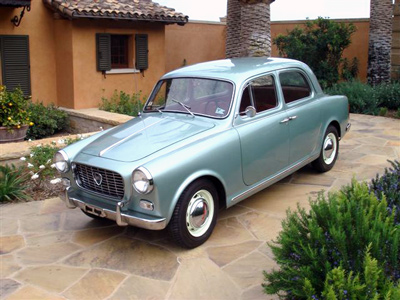
The Series III is still a very attractive proposition, and easier to drive than earlier models.
|
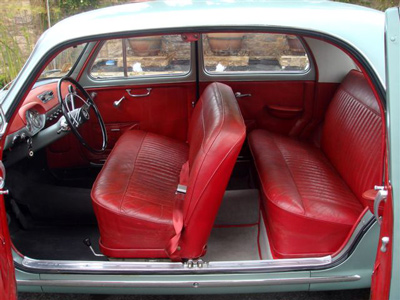
Youngberg's
car has the optional leather interior. Safety regulations would soon put an endo to any front opening doors and that wonderful access would be lost forever.
|
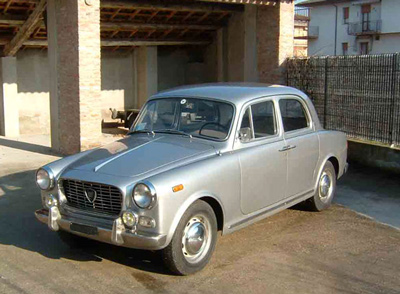
The Euros had the mandatory side marker, but were essentially the same animal.
|
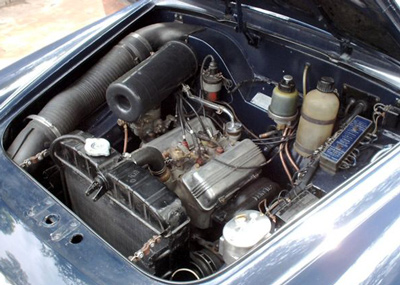
The engine would live on in modified form to power the Fulvia.
|
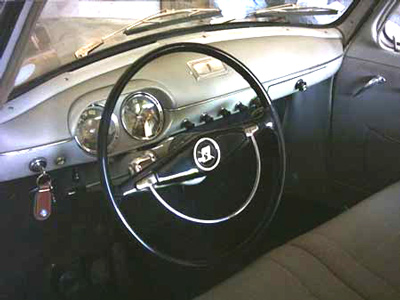
Durable interior cloth was standard. The interior, aside from the side pockets, was identical to the Series II.
|



